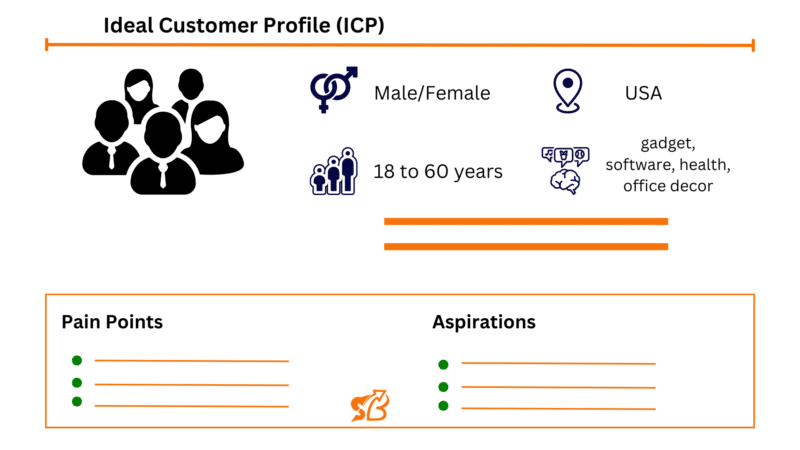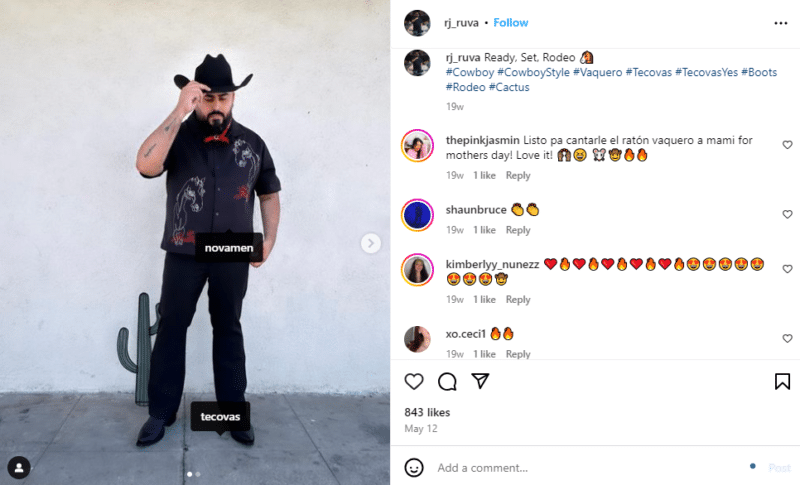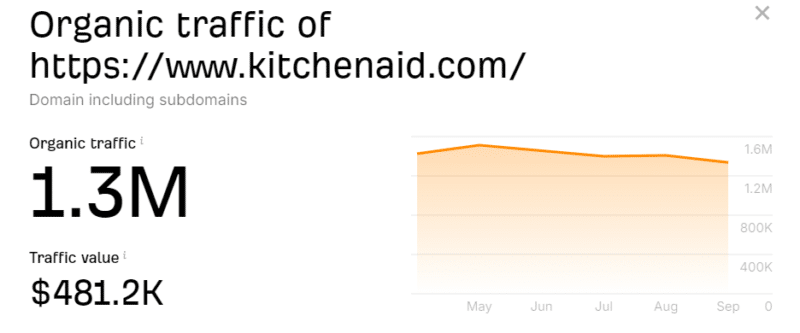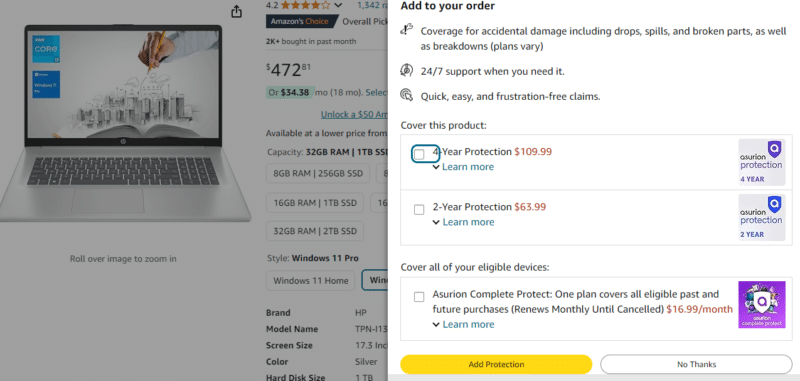There are two proven strategies to scale an e-commerce business: one is by optimizing your existing resources to increase sales, and the other is by leveraging effective e-commerce marketing strategies to drive growth.
In this guide, we’ll dive into both approaches, helping you understand the common barriers that might be holding back your e-commerce store from reaching its full potential.
First, we will explore the best e-commerce growth strategies that include data-driven marketing and online store optimization to help you scale and expand.
After that, we’ll discuss how to increase sales and boost your return on investment (ROI) using your current resources, ensuring that you make the most of your existing clients and assets.
Designed for e-commerce business owners, this guide will help you:
- Increase revenue: Attract and convert high-quality leads through targeted marketing.
- Boost sales by up to 30%: Leverage your existing customer database effectively.
- Build customer loyalty: Engage your audience with effective techniques for lasting relationships.
- Enhance brand visibility: Use influencer partnerships and SEO to expand your reach.
- Establish trust and credibility: Leverage positive reviews to win over new customers.
- Optimize marketing efforts: Analyze customer behavior for tailored strategies.
- Achieve long-term growth: Implement proven strategies for immediate results and sustainable success.
Let’s get started:
On this page
Find out who your customers are:
The core philosophy of marketing is delivering the right message to the right person.
For effective marketing of your e-commerce business to get optimal results, you should ensure that you’re reaching the right target audience.
Just because anyone can browse your products online doesn’t mean everyone is your potential customer. If you’re targeting people who aren’t a good fit, you’re wasting time, energy, and resources that could be better spent bringing in qualified leads and boosting your e-commerce conversion rate.
The more visitors who land on your store without converting, the more you lose on e-commerce hosting, bandwidth, and other resources.
Industry averages show that if your conversion rate is below 1%, you’re likely missing out because you’re not focusing on your Ideal Customer Profile (ICP) or buyer persona.
But you can fix this by building a clear and detailed buyer persona.
Here’s how to do it:

If you already have an existing customer base, you likely have insight into your customer behavior and can use that to create an ICP. But if you’re just getting started, it might take more time to truly understand your audience.
To create a thorough ICP, focus on important aspects like demographics, interests, pain points, goals, and buying behaviors of your target audience. The deeper your understanding, the better you can craft a targeted marketing strategy that resonates with the people most likely to buy your products.
Influencer marketing: a key strategy for e-commerce growth

Influencer marketing can be your best partner in helping you grow your e-commerce store.
Influencer marketing involves collaborating with online influencers who have a significant following and credibility within their niche. When they promote your products to their engaged audience, they leverage the trust they’ve built over time. A single post about your product can drive substantial traffic to your online store and boost sales.
The traffic, growth, and sales you achieve depend on the engagement and audience of the influencer. While influencers with larger audiences may charge more, their reach can significantly enhance your brand-building efforts.
Here are the benefits you can expect from influencer marketing.
- Reach new audiences: If you’re a new e-commerce store, you should look for niche-specific influencers rather than general celebrities, which may cost you a lot of money. By partnering with niche-specific influencers, you can tap into their audience base, introducing your brand to potential customers who may not have discovered you otherwise. For example, Gymshark effectively partnered with fitness influencers to reach health-conscious consumers, significantly expanding its customer base.
- Enhance brand awareness: Influencer endorsements can dramatically increase your brand visibility and loyalty. When influencers share their experiences with your products, their followers often view these endorsements as trustworthy recommendations. For instance, Daniel Wellington utilized a network of micro-influencers to create authentic content that resonated with their audiences, leading to widespread recognition and brand loyalty.
- Build credibility and trust: Consumers tend to trust recommendations from individuals they admire. For example, Glossier has thrived by leveraging customer influencers who share genuine testimonials, making their products more appealing to new customers.
- Cost-effective marketing: Influencer marketing often operates on a “pay for performance” model, where compensation is linked to the campaign’s success, such as sales or engagement metrics. This structure minimizes risk and maximizes return on investment. For instance, Fashion Nova’s partnerships with various influencers led to significant sales increases, showcasing the effectiveness of performance-based compensation.
Grow your e-commerce store with SEO:
It might surprise you that 43% of the traffic to e-commerce stores comes from search engines, according to the Wolf Gang Study.
You can also capture a share of this traffic by either running ads or optimizing your e-commerce store for search engines such as Google, Bing, and others.
Running ads can be a great strategy, as it can yield a 2.5x ROI.
However, if you focus on SEO, it can provide even better returns. Many e-commerce stores receive millions of visitors each month without spending anything on Google Ads, and you can too.
For instance, look at KitchenAid, they get 1.3M visitors organically from search engines like Google, Bing, and other search engines.

This traffic depends on the potential, if you sell products with a limited audience, surely you can’t attract millions of visitors but in that case, even a few thousand will make your day.
Here are some components of an SEO strategy that will help increase visibility for your online business and also drive more sales:
- Keyword selection: Identify keywords that relate to your products that are moderately easy to rank for. These terms have to be what people are looking for. Ideally, you should focus on all the keywords based on the sales journey. If you target all of the keywords, you can get the highest relevant traffic for brand awareness and sell them over time.
- Write unique descriptions: Ensure that your product descriptions are unique and contain a call–to–action. Use words that make your products look like they are the best on the market and don’t use the same descriptions as other sites.
- On-page SEO: You should make sure every webpage on your site is optimized for SEO. Here is the checklist.
- Get backlinks: Links have a direct relation with rankings. When high authority sites link to you, it increases the visibility of your website, bringing in more visitors. Here are some easy link-building strategies.
I would frankly tell you, it won’t be easy and you might fail at SEO without appropriate knowledge. So, it’s better to hire an SEO company. They will surely help you acquire tens of thousands of visitors and save you money.
Social media marketing:

It’s no surprise that social media marketing is a powerful tool. Nearly all of your target audience is actively using social media, engaging with content, and making purchasing decisions based on what they see online.
You just need to ensure your audience can easily engage with your content and find value in it.
For instance, my wife loves buying clothes online and follows many fashion brands on Facebook. She enjoys it when brands regularly share new designs, and she never wants to miss their updates.
By understanding your ideal customer profile (ICP) and creating relevant content tailored to their needs and interests, you can increase engagement and drive significant traffic from social media platforms. This kind of targeted social media presence can help you scale your e-commerce business by reaching the right people with the right message.
Try new platforms to sell more (or sell internationally):
If you have a Shopify store and you’re looking to expand your e-commerce business, it’s worth exploring other sales channels. Let me explain why this is important.
To sell your products, you need to present them effectively to your target audience, which requires strong marketing efforts. However, even with the best strategies, some potential customers may hesitate to buy due to a lack of trust, poor user experience (UX), or other factors.
Now, if there’s an opportunity to list your products on a trusted platform that not only helps you build credibility but also exposes your brand to millions of active users, why not take advantage of this e-commerce growth strategy?
Here are three platforms that can help you increase your sales. These platforms have millions of active buyers and offer a chance to build your brand presence at no upfront cost. Plus, they allow you to tap into international markets.
For example, if you’re based outside the USA but want to sell to American customers, you can open an Amazon store, use their fulfillment services (FBA), and easily reach the U.S. market by shipping your products to Amazon’s warehouses.
eBay:
eBay is not just for old items anymore. Today, eBay connects you to a vast community of 185 million active buyers globally. With so many individuals using eBay—especially on mobile devices—you can reach customers who may not be accessible through traditional selling methods.
This increases the likelihood that unsuspecting customers will discover and purchase your products, enhancing your e-commerce sales potential.
Google merchant center:
For e-commerce companies, utilizing Google Merchant Center is a strategic choice. It ensures that you remain competitive with larger brands and appear prominently in online searches.
Google Merchant Center helps you find new customers and boosts your online sales. Moreover, it allows consumers to buy from multiple sellers without having to navigate through different platforms, simplifying the shopping experience.
Amazon:
Selling on Amazon enables you to reach a vast audience, making it an excellent platform for e-commerce. Getting started is straightforward, and if you are new to the market, remember that Amazon’s strong reputation and reliable delivery system can work to your advantage.
This makes Amazon a valuable channel for increasing your product visibility and driving sales growth.
Now, let’s see how you can sell more products by optimizing processes.
Grow your e-commerce store with repeat business
The first strategy you can use to increase your sales is focusing on repeat business. It is incredibly valuable for e-commerce stores. On average, repeat customers account for 40% of an e-commerce store’s revenue, even though they typically make up only about 8% of the total customer base.
And it’s because of some incredible facts:
- According to Smile research, returning customers are 9x more likely to convert compared to first-time visitors. That means you can easily sell to your satisfied customers. This is why giving people more reasons to come back is necessary.
- RJ Metrics found, repeat customers typically spend about 67% more than new customers.
- Another research shows, 5% increase in customer retention can boost profits by up to 95%.
Here are some effective strategies to drive repeat business:
- Collect their data: Your first step should be to connect with them in any way possible. You can collect their emails or other details in exchange for something valuable. For instance, you could inform them about yearly discounts and let them know that you will notify them once those discounts are live.
- Offer incentives: Create exclusive discounts or special promotions for returning customers. This could include percentage discounts, free shipping on their next purchase, or buy-one-get-one-free deals. Such incentives not only encourage repeat purchases but also build trust and loyalty.
- Implement a loyalty program: Develop a rewards system where customers earn points for every purchase they make. These points can be redeemed for discounts or free products in the future. Loyalty programs keep customers engaged and coming back for more.
- Regular Engagement: Stay in touch with your customers through email newsletters, updates on new products, and reminders about items they may have left in their cart. Regular engagement helps keep your brand top of mind.
- Request Feedback: After a purchase, ask customers for their feedback through surveys or reviews. Showing that you value their opinion fosters a sense of connection and encourages them to return.
By implementing these strategies, you can significantly enhance your e-commerce store’s performance and capitalize on the immense potential of repeat business.
Make the most of your email list:
Even though some people think email marketing isn’t popular for e-commerce stores, it remains a quick and powerful way to engage with customers.
According to a recent survey conducted in the USA, a significant majority of customers prefer companies to contact them via email. For instance, 57% of Generation Z and 79% of millennials favor email communication over other channels.
However, sending generic emails to everyone on your contact list won’t yield good results. For your email marketing strategy to be effective, you must send personalized emails that align with your customer’s interests.
If you haven’t already segmented your email list into different categories, consider sending a survey to your subscribers.
This can help you gather valuable insights into their preferences, such as what they are looking for in your store and how often they want to receive updates.
Using this information, you can create targeted email campaigns tailored to the specific interests of your customers, enhancing engagement and boosting conversion rates.
In particular, you drive massive sales by sending discounted offers and new seasonal collections.
This can increase up to 30% e-commerce business sales:
The average cart abandonment rate in e-commerce typically hovers around 70%, though this can vary by industry. Some studies suggest that anywhere from 60% to 80% of shoppers abandon their carts before completing a purchase.
If you focus on these potential customers, you can convert 10% to 30% of these potential customers.
Ideally, you should have a super amazing customer support to reach them out and solve their objections. Or you can also send them personalized emails.
To make sure customers come back to buy from you again, it’s super important to give them the best service possible.
Remember, the sales process does not stop at the purchase.
5-star reviews will increase your sales:
Since customers cannot touch or try your products before buying them online, it is up to you to ensure that their shopping experience is stress-free and simple.
You can do it by building the credibility of your store. And customer reviews make businesses credible and reliable.
According to Podium, nearly nine out of ten people read reviews before buying, and over half of them read at least four reviews. Plus, almost half of internet users write reviews themselves every month.
And even Google will prefer your business based on reviews. If you get a ton of 5-star reviews, you will not only get more conversions but also boost your SEO traffic.
If your customers leave bad reviews, it’s not just bad news for them to come back to shop again. It also keeps away other people from trying your products.
Upsell and cross-sell:
This is another often overlooked e-commerce business growth strategy that many stores miss out on due to limited resources. However, spending a little time optimizing your store for upselling and cross-selling can result in substantial growth.
If you’ve ever noticed while shopping on Amazon, they’re always recommending complementary products to encourage additional purchases, often in a way that feels natural to the customer.
For example, when purchasing a laptop, Amazon suggests related products like laptop cases or screen protectors, which are typically low-cost items, making it easier for customers to buy without hesitation.

This cross-selling tactic increases the average order value without pushing customers too hard.
Additionally, they frequently offer extended warranties or protection plans. From personal experience, I can tell you that 30-50% of customers add these plans when buying tech products like laptops.

By implementing these upselling and cross-selling strategies in your store, you can significantly increase sales without investing extra in marketing.
It’s a powerful way to boost revenue while optimizing your current customer base.
Make your business easy to use on phones:
Since most people use their phones to browse the internet nowadays, it’s crucial to ensure your e-commerce website and online store are fully mobile-friendly. Thankfully, there are tools to help with that.
A tip from a Successful Entrepreneur:
Make sure your website is responsive and works well on different screen sizes. Check that links function properly, content displays correctly, and it’s easy to scroll. — Joy Organics.
If you’re using a popular e-commerce platform, your store is likely already optimized for mobile. However, it’s still important to double-check a few things on your product pages. Here are some tips to optimize your store for mobile devices.
- Optimize load speed: Ensure your store loads quickly on mobile devices. Mobile users expect pages to load in under 3 seconds—according to research, each second delay can result in a 7% reduction in conversions.
- Test user experience regularly: Don’t just assume your site works well—test it! Regularly check your website’s performance on different mobile devices to ensure a seamless shopping experience.
- Enable mobile payments: Make sure your checkout process is optimized for mobile. Integrating mobile payment options like Google Pay, Apple Pay, or PayPal can significantly reduce cart abandonment.
- Use mobile-friendly design features: Prioritize using larger buttons, simple navigation, and clear fonts for smaller screens.
By following these strategies, you’ll increase sales and revenue without spending extra time on additional marketing efforts.
In a nutshell, if you leverage influencer marketing to boost brand awareness, optimize your e-commerce store for mobile users, and target your ideal customer profile (ICP) with effective email marketing and personalized content, you’ll reach new audiences while maximizing your existing resources.
Utilizing platforms like Google Merchant Center and Amazon, along with improving social media engagement, will further expand your reach and attract more potential customers.
When you implement these tactics to tap into new markets and optimize current processes, you’ll experience significant growth in sales and business performance.